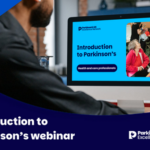Jeremy Dunning investigates how the London Olympics has been the springboard to end rough sleeping in the capital and secure meaningful activities for former rough sleepers
The campaign to end rough sleeping in London for good began in 2005 straight after the capital was awarded the 2012 Olympic Games. In the wake of the decision, umbrella charity Homeless Link, which represents more than 480 frontline charities, said the event should be used as a catalyst to redouble efforts to end homelessness in London, the only area not to meet the government’s 1998 target to cut rough sleeping by two-thirds.
Homeless Link chief executive Jenny Edwards says the Olympics “gives us a very nice, particularly high-profile timetable around which to achieve a once-in-a-lifetime offer”, while Richard Blakeway, director of housing for London mayor Boris Johnson, says it is taking “a unique moment in time” to end something that has been “symbolic in London for several decades”.
Consensus
There is consensus on the ultimate objective to end rough sleeping by 2012 – articulated by the government through November 2008’s No One Left Out strategy, and followed by Johnson’s establishment of a multi-agency delivery board in February this year – but different organisations have employed a variety of tactics, not all of them popular.
The initial focus has been on the 205 most entrenched rough-sleepers, of whom only 67 now remain on the streets. The recession has made little dent on this optimism so far, with charities reporting that the number of people made homeless directly because of recessionary pressures is nowhere near that in previous downturns, although there are many people from Eastern Europe on the streets.
Personalised budgets
The main methods being used include personalised budgets, joint working between health and social care, and between the prison service and housing departments, an expansion in outreach services, targeted grants, employment programmes such as Personal Best (see case study, opposite), and the sharing of best practice among councils.
Edwards also says it has been vital to “have a different conversation with people” to find out why they are living on the streets and what their aspirations are.
However, there have been criticisms over the use of enforcement measures such as antisocial behaviour orders, dispersal zones and the practice of “wetting down” doorways in the City of London through the Corporation’s Operation Poncho, run in partnership with the police and homelessness charity Broadway.
‘Draconian methods?’
Housing Justice is concerned that these methods are becoming more prevalent and will simply drive the most entrenched out of London and away from services. It has published a guide for rough sleepers detailing their rights, although it stresses it does not want people to continue to sleep rough.
Michelle Binfield, the Department of Communities and Local Government’s special adviser on homelessness for London, says Housing Justice’s approach is misguided. “We are trying to be more imaginative. Some people are still very stuck and their psychological problems mean they aren’t recognising it’s bad for them. Enforcement is helpful and we talk about it driving people into the arms of social care. Enforcement allied with a good social care offer is the only way to go.”
Imaginative schemes
Among the “imaginative schemes” DCLG is backing is a personalised approach to support 15 rough sleepers. The City of London, Broadway, DCLG and In Control are involved in a project to use personalised budgets for entrenched rough sleepers.
A City of London spokesperson says: “We cannot simply leave rough sleepers alone. We need to engage them, check on their welfare and offer them support, and our outreach workers do everything they can to ensure their particular needs and requirements are met. No one needs to sleep rough within the City of London area as we have pledged to find appropriate accommodation for all who wish to access it.”
Range of problems
Blakeway says the key is to get people off the streets and directed towards services, but this is not easy as they will have a range of problems. Agencies must be creative and focus on personal and health needs.
“There was a guy in Barnet from the 205 [most entrenched rough sleepers] who had clear mental health issues,” he says. “A GP would go out with the outreach team and would work on the guy on the streets, which was a way of encouraging him to come indoors for his health.
“We’ve got every tier involved in this, which gives us a unique opportunity to galvanise action that should be lasting. The way we are approaching this should sustain them from the streets. What it’s producing as a legacy is a change in practice [with organisations working together].
“This is work in progress. One thing we hope that will come out of this is a different approach to dealing with the health needs of the homeless.”
Government initiatives to tackle rough sleeping
Over the past two years the government and local authorities have launched initiatives to end rough sleeping in London. These include:
● The London mayor’s director of housing, Richard Blakeway, has secured the support of Transport for London to fund work to help rough sleepers using night ‘bendy’ buses, and link them with appropriate services.
● Eight east London boroughs, including Hackney, Tower Hamlets and Waltham Forest, have launched a rough sleeping strategy.
● The government has funded 15 “ending rough sleeping champions” from a variety of agencies to promote and share best practice in preventing and tackling rough sleeping.
● The Chartered Institute of Housing, Homeless Link and Broadway are developing an accredited training scheme, Engage to Change, to improve the practice of frontline homelessness workers.
● Homeless Link has developed a Prevention Opportunities Mapping and Planning Tool to help local authorities understand the routes people follow before they end up on the streets, and develop interventions to prevent them having to sleep rough.
● Work has been undertaken to pilot a hospital discharge protocol in London. As a result of this, recommendations have been made to NHS London – through the London Delivery Board – for the establishment of “homeless ward rounds” to prevent people leaving hospital with nowhere to go.
Case study: Stephen Crowley, former rough sleeper
Unemployed, homeless for five years and an alcoholic, Stephen Crowley thought he was destined to live the rest of his life on the streets. But after a woman he knew died while on the streets, he realised he had to turn around his life.
“I wanted to move forward and become a support worker because I had seen a lot on the streets and I wanted to help people,” he says.
As a first step, the 41-year-old went on a training course to qualify as a support worker but failed the entry test.
He was advised to get a place on the Personal Best course run by the London Development Agency at City Lit, the Centre for Adult Learning. This works with homelessness charity St Mungo’s.
“I jumped on board,” he recalls. “I see now it was a springboard to help people like myself get back into society.”
The programme is aimed at helping people furthest from employment into long-term, sustainable jobs and is linked to the 2012 Olympic and Paralympic games. The events will require 70,000 volunteers and the programme prepares people by offering training and volunteering opportunities.
Crowley says: “My recovery has been quite slow but the course has helped me become more motivated. It’s helped me open up more.”
Until earlier this year he was also involved in voluntary work at a drop-in centre and hopes to do more this year.
He has now embarked on a carpentry course and is trying to boost his literacy and numeracy skills.
“I’m so grateful and thankful for all of this,” he says.
- Strategy No One Left Out



 Bournemouth, Christchurch and Poole
Bournemouth, Christchurch and Poole  Hampshire County Council
Hampshire County Council  Oxfordshire County Council
Oxfordshire County Council  South Gloucestershire Council
South Gloucestershire Council  Wokingham Borough Council
Wokingham Borough Council  Harnessing social work values to shape your career pathway
Harnessing social work values to shape your career pathway  Webinar: building a practice framework with the influence of practitioner voice
Webinar: building a practice framework with the influence of practitioner voice  ‘They don’t have to retell their story’: building long-lasting relationships with children and young people
‘They don’t have to retell their story’: building long-lasting relationships with children and young people  Podcast: returning to social work after becoming a first-time parent
Podcast: returning to social work after becoming a first-time parent  How managers are inspiring social workers to progress in their careers
How managers are inspiring social workers to progress in their careers  Workforce Insights – showcasing a selection of the sector’s top recruiters
Workforce Insights – showcasing a selection of the sector’s top recruiters  Empowering people with Parkinson’s to lead fulfilling lives
Empowering people with Parkinson’s to lead fulfilling lives 

 Facebook
Facebook X
X LinkedIn
LinkedIn Instagram
Instagram
Comments are closed.